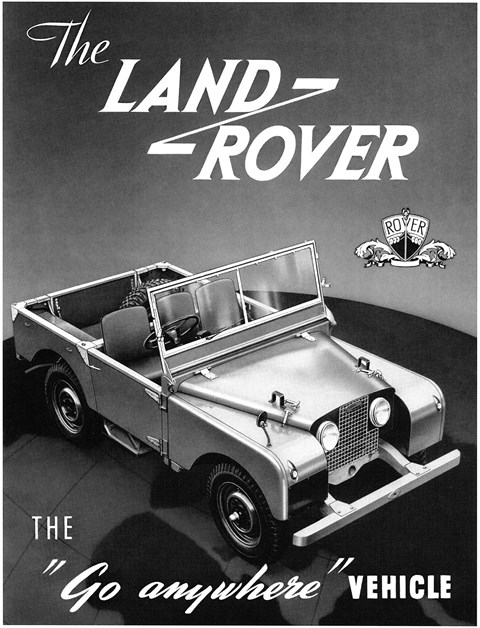► Almost 70 years of Land Rover history
► One-off Defender 90 built in memory
► We remember the genesis of the Landie
Nearly 70 years of the original Land Rover drew to a close on 16 December, when the company auctioned the two-millionth car for charity at Bonhams in London. Hand-built by notables including representatives of the Red Cross and the Born Free Foundation, the one-off Defender 90’s front wing wears a graphic of the place the Land Rover was conceived, Red Wharf Bay in Anglesey.
It was here in 1947 that two Rover executives, brothers Maurice and Spencer Wilks, met to discuss a new vehicle to revive the company in the post-war era. Maurice used an American Willys Jeep to traverse his Anglesey farm, but it was worn out and expensive to maintain. Supposedly, managing director Spencer asked his brother how he would replace his Jeep, and the engineer responded by drawing an outline for the world’s first commercial 4×4 in the sand.
The Wilks had identified a gap in the market: a farming vehicle that was more versatile and agile than a tractor. It would have power take-offs to drive machinery, and be a true ‘all-purpose vehicle’. Maurice christened the project ‘the Land Rover’.

The aftermath of the war profoundly shaped the vehicle. Steel was rationed: the government would only grant Rover enough for 1100 cars, grossly insufficient for the 20,000 needed to re-establish the company and protect the workforce. Aluminium, however, was in good supply, having been used to build Spitfires for the war effort. So alloy was used for the car’s unadorned, boxy body and the floor and seats, while steel box sections formed the simple chassis frame, scuttle and dash.
The initial 1.4-litre engine proposed made way for a new 1.6-litre, mated to a four-speed gearbox transmitting power to a transfer box with high and low ratios, and propshafts driving both front and rear axles. Britain’s first ever 4×4 had arrived, making its debut in April 1948.
Ironically, the Land Rover was only intended to be a stop-gap vehicle, but it exceeded its first-year sales target of 5000 by 60%. The peak proved to be 56,663 Series IIAs in 1970; recently around 17,000 have been made. And next month, production will cease. But the vehicle that established the world’s mightiest SUV brand will be born again as an all-new 4×4, by 2019 at the latest.